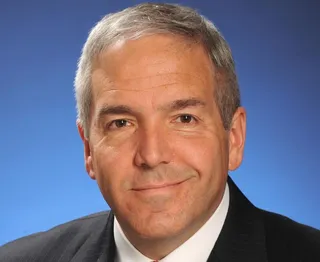
The next big thing: Insurance-as-a-Service
Readers of Captive International are quite familiar with the term “alternative market”. Captives, risk retention groups (RRGs), and self-insurance have revolutionised the way we look at commercial risk today. This alternative market has been so successful, it’s no longer an alternative—it is the market.
I believe Insurance-as-a-Service will be the next big thing. I say next big thing because the problems that need addressing are big. These problems are too big for the US government to solve alone, and the commercial market needs to step up. It will require a major shift in how we think about things such as cybersecurity, trucker liability, and guns, to pick a few.
It will eventually impact all segments of the commercial market. Solutions to these issues will not be driven simply by regulations or technology. To solve these problems, we need to think differently.
Software-as-a-Service (SaaS) revolutionised the internet. Everyone now accesses applications online rather than buying and installing expensive software. We only need to look to our cellphones to understand how this model is working. It works so well many of us have ditched our laptops.
How many of you have cut the cord on cable? We can now stream what we want, where we want, when we want it, and pay only for what we need. It makes sense. (Getting the kids off the cellphone plan and purchasing their own Netflix makes sense too, but this is a topic for another day.)
Cost savings and ease of use are two reasons SaaS works, and network security is another. At least twice a month, I seem to be updating my Android with the latest security, and the cost of updates is included in the service. I see this model as the future of cyber risk and cyber liability insurance in general.
Smaller and medium size organisations need an affordable way to set up efficient and secure networks without having to commit to hardware and IT specialists they can’t afford.
Cyber insurance has become increasingly hard to find at any price, particularly for the increased limits now required in industries such as healthcare or any type of billing using a credit card. Call it better risk management or a different way of thinking, but this is what the cyber industry’s future looks like: secure access networks providing network security to small and medium businesses.
Keep on trucking
Elon Musk wants to offer insurance on Tesla vehicles when they become 100 percent autonomous. Who else would insure them? Tesla controls the software, so it may as well provide the liability insurance as well. Tesla will be sued in the event of an accident, so it may as well collect a fee for the new risk being assumed. Yes, I said a fee—not premium. Will this be insurance from the car owner’s perspective or a service? Time will tell.
Guns and gun liability seem to be front page every day now. Why not offer firearms safety training and liability protection to buyers at the time a gun is purchased? This niche product/service is already a $200 million market. Premiums will continue to grow, and products will evolve to better meet the needs of consumers and the broader public. Is the future of “general” liability that it becomes specific product liability?
What is the biggest risk predictor in trucker liability insurance? No, it’s not the lawyers—it’s the truck drivers. Better, more experienced drivers are the key to better liability insurance results. Trucking firms are forced to choose every day either to hire a less experienced driver or to leave a vehicle idle.
Both choices are bad. Either the trucking company or its insurer gets the short end of the deal. What if someone was to create an insurance programme where the trucking company can go to its insurer for replacement drivers—a company that focuses on the driver rather than the trucking company?
That company exists, and it has more than 400,000 drivers and 7,500 trucking companies on its platform. It is now building an insurance programme to take advantage of what it has developed: a driver-centric insurance programme. How is that for service?
We can probably agree that nothing settles a liability claim faster than when there is video available following an accident. The video should be universal, right? The problem is truckers want discounts to use cameras. It also invades on driver privacy.
Insurers don’t want film showing their insureds are guilty. They also want to see more positive results before paying for cameras or discounting premiums. There is an RRG that is offering free cameras for all new accounts. The camera is free, and its use is not mandatory. However, if the truck company refuses to install the camera, it will pay more for coverage. Simple, right? Not surprising—it’s an alternative market insurer thinking differently.
Thinking differently is the key to success in any business. Innovation in insurance is no different. It’s the reason captives make as much sense today as they did 50 years ago. We still have many unanswered questions about this insurance future, but all the service businesses described above are either currently using or considering using a captive—not so surprising.
Greg Lang is the founder of Reinsurance and Insurance Network. He can be contacted at: glang@rainllc.com

